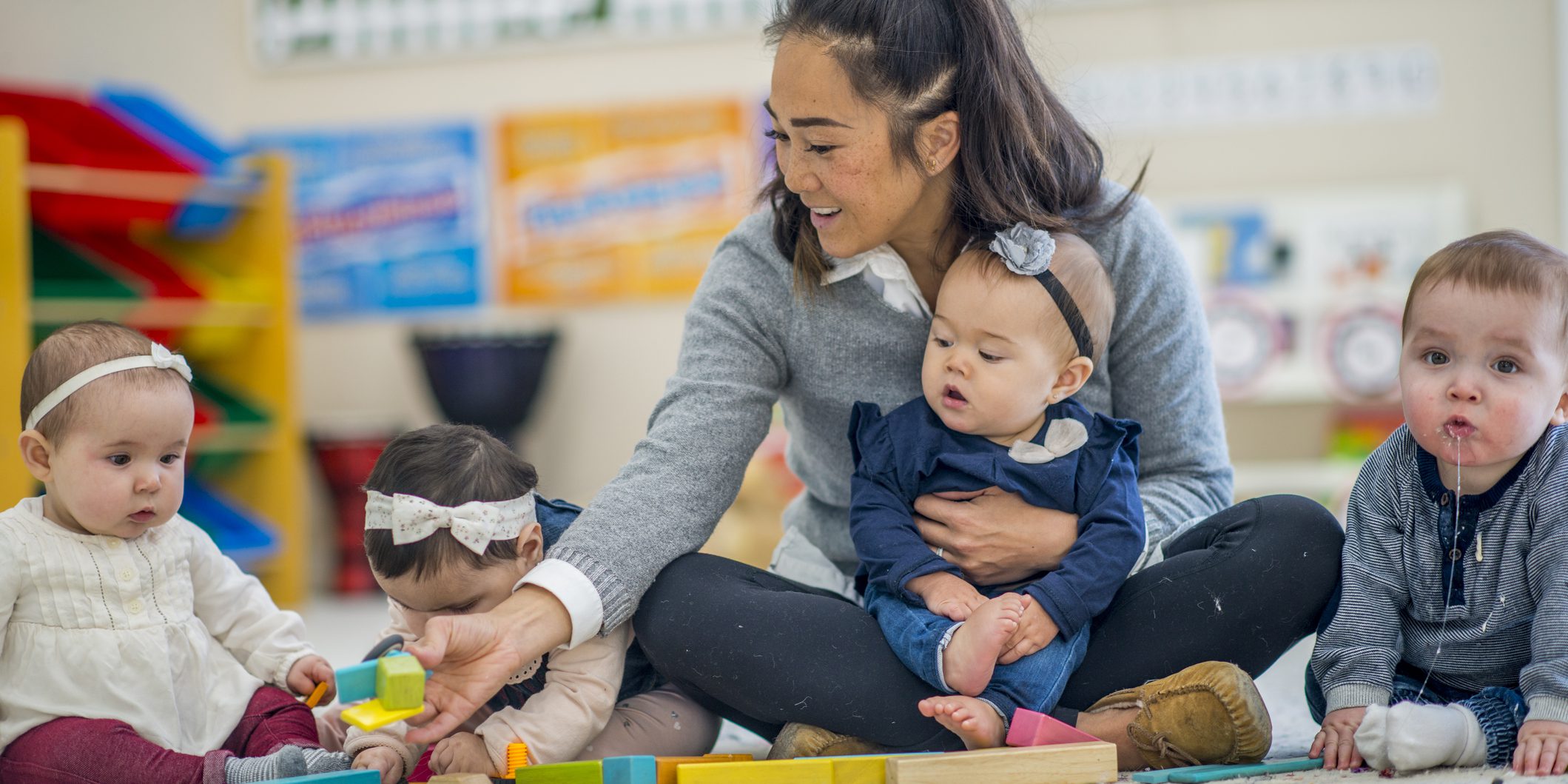This measure analyzes how teachers recognize and respond to children’s verbal and non-verbal signals caused by stress, shyness, or withdrawnness. For example, if a child looks frustrated while doing homework, the teacher can positively respond by checking on the child and providing the proper assistance. If the teacher ignores the child’s frustration by preparing snacks for the next class instead, the teacher has exhibited a negative reaction.
Category: Category 1: Director and Staff Qualifications
Subcategory: Warm and Responsive Style
Examples
In this section you will find videos, images, and/or documents that can be used to better understand this measure. These examples can also be used in conversations between mentors, directors, and/or teachers to discuss how the program's current practices compare to these examples.
Video Example
This Texas Rising Star exemplar video highlights teachers of all age groups attending to children’s signals and needs. In the video, you will notice teachers responding to children’s verbal and non-verbal signs that they may need help, have questions, or might be frustrated.
Age(s): Infant, Toddler, Preschool, School-age
Video Example
In the video segment Provide Comfort to Children in Distress, the CLI exemplar demonstrates ways teachers can comfort babies when they show signs of stress and discomfort. Noticing and attending to children’s signals allows babies to trust practitioners to meet their needs.
Age(s): Infant
Video Example
As this group of toddlers builds fine motor skills, the teacher notices and attends to their verbal and nonverbal signals. At the beginning of the video, she responds to the child’s suggestion by modeling the task. Then, later, she helps a child who struggles to put the top back on the container before she becomes frustrated.
Age(s): Toddler
Video Example
In this recording, teachers demonstrate how to consistently notice and attend to children’s needs and signals as signs of stress arise or as children attempt to communicate by responding to their questions, comments, or vocalizations. This video is a part of a larger professional development series.
Age(s): Infant
Practice Opportunities
These resources include tips, strategies, activities, or specific tools related to this measure that programs can put into practice.
Activity
In this activity, children practice asking for what they need or want. Modeling for children how to ask for things helps them communicate clearly, which will prevent frustration and challenging behaviors.
Age(s): Preschool, School-age
Publication
This publication from the Department of Early Education and Care discusses techniques teachers can use to get to know their children as they attend to their signals and needs throughout the day. The techniques described can be used to ensure children feel a sense of trust and wellbeing from the adults that care for them.
Age(s): Infant, Toddler, Preschool
Publication
Following the Child’s Lead, a publication created by Early Childhood Technical Assistance Center, gives an overview of how teachers can notice and attend to children’s signals and needs by simply following their lead.
Age(s): Infant, Toddler, Preschool, School-age
Publication
Get “In Tune,” a publication created by the Department of Early Education and Care, gives teachers ideas on how they can have back-and-forth “talks” with babies before they can understand or speak. During these “talks,” the teachers will use kind and caring language as they notice and attend to children’s needs.
Age(s): Infant, Toddler
Publication
Naturalistic Instruction Practices, a publication created by Early Childhood Technical Assistance Center, gives ideas on how teachers can respond to children’s needs and signals to support and encourage children’s engagement in child-initiated activities.
Age(s): Infant, Toddler, Preschool, School-age
Publication
This document by the Department of Early Education and Care describes what teachers can do when they notice babies attempting to communicate. The publication Reading Gestures describes techniques caregivers can use to respond promptly when they recognize babies using gestures.
Age(s): Infant
Activity
In this activity, the baby will share a toy with a caregiver. As the baby participates in the turn-taking cycle, the caregiver must pay attention to the child’s signals to see if they are ready to give and receive the toy. Waiting for the baby to share and returning the toy to them when they signal that they want it builds trust.
Age(s): Infant
Publication
In the publication “Supporting the Development of Self-Regulation in Young Children,” practitioners are given insightful ways to attend to children’s needs and signals in stressful moments. The document suggests ways caregivers can create calm and structured childcare environments by responding warmly to babies and having a patient and relaxed style.
Age(s): Infant








